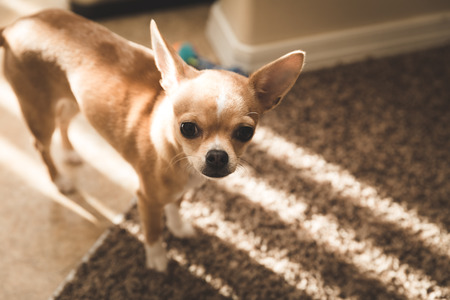1. Understanding Your Birds Needs
Before choosing a cage for your pet bird, its essential to understand their unique needs. Different bird species have varying sizes, activity levels, and natural behaviors that influence the type of cage they require. Selecting the right cage ensures your feathered friend stays healthy, happy, and engaged.
Bird Size and Cage Dimensions
The size of your bird plays a significant role in determining the appropriate cage size. A general rule is that the cage should be large enough for your bird to stretch its wings fully and move around comfortably. Below is a guide to recommended cage sizes based on different bird species:
| Bird Species | Recommended Minimum Cage Size |
|---|---|
| Parakeet (Budgie) | 18″ W x 18″ D x 24″ H |
| Cockatiel | 20″ W x 20″ D x 24″ H |
| Lovebird | 24″ W x 24″ D x 30″ H |
| African Grey | 36″ W x 24″ D x 48″ H |
| Macaw | 40″ W x 30″ D x 60″ H |
Activity Level and Space Requirements
Some birds are more active than others and require more space to fly or climb. Birds like parakeets and finches enjoy flying horizontally, so wider cages are better. On the other hand, parrots such as cockatoos love to climb, making vertical space just as important as width.
Cage Bar Spacing Considerations
The spacing between cage bars is another crucial factor. If the bars are too wide, smaller birds may escape or get stuck. Here’s a quick reference for bar spacing recommendations:
| Bird Size Category | Recommended Bar Spacing |
|---|---|
| Tiny Birds (Finches, Canaries) | ⅜ inch or less |
| Small Birds (Parakeets, Lovebirds) | ½ inch or less |
| Medium Birds (Cockatiels, Conures) | ¾ inch or less |
| Large Birds (African Greys, Amazons) | ¾ – 1 inch |
| X-Large Birds (Macaws, Cockatoos) | 1 – 1.5 inches |
Your Bird’s Natural Behaviors Matter
Certain bird species have specific natural behaviors that should be considered when selecting a cage:
- Budding Flyers: Birds like finches and budgies love to fly across their cages, so a wider setup is best.
- Avid Climbers: Parrots such as conures and macaws enjoy climbing; ensure the cage has horizontal bars for easy gripping.
- Nesting Instincts: Lovebirds and cockatiels may appreciate a cozy corner with nesting materials available.
- Sociable Birds: Some birds prefer living in pairs or groups, requiring larger cages to accommodate multiple birds comfortably.
The Importance of Choosing Wisely
Selecting the right cage isn’t just about aesthetics—it directly impacts your pet’s well-being. By considering your bird’s size, activity level, and natural instincts, you can create a comfortable and enriching environment that allows them to thrive.
2. Choosing the Right Cage Size and Shape
When selecting a cage for your pet bird, size and shape are crucial factors that directly impact their well-being. A properly sized cage ensures that your feathered friend has enough space to move, stretch its wings, and feel comfortable in its environment.
How Big Should the Cage Be?
The ideal cage size depends on your bird’s species, wingspan, and activity level. A general rule is to choose the largest cage you can afford and fit in your home. Birds need room to hop between perches, flap their wings without obstruction, and play with toys.
| Bird Size | Recommended Minimum Cage Dimensions (L x W x H) |
|---|---|
| Small Birds (Finches, Canaries, Parakeets) | 18” x 18” x 24” |
| Medium Birds (Cockatiels, Lovebirds, Conures) | 24” x 24” x 30” |
| Large Birds (African Greys, Amazons) | 36” x 24” x 48” |
| X-Large Birds (Macaws, Cockatoos) | 48” x 36” x 60” or more |
The Importance of Cage Shape
Cage shape also plays a role in your bird’s comfort. While tall cages may seem like a good choice, birds primarily move side to side rather than up and down. A wider cage allows for better movement and flight within the enclosure.
Avoid Round Cages
Avoid round cages as they lack corners where birds can feel secure. Birds often feel uneasy in circular cages because they don’t provide defined spaces for rest or retreat.
The Best Cage Shape for Your Bird
A rectangular or square-shaped cage with horizontal space is ideal. This design provides stability and maximizes usable space for perches, toys, and feeding areas.
![]()
3. Safe and Durable Cage Materials
Choosing the right material for your birds cage is essential for their safety and well-being. Some materials are more durable, while others may contain harmful coatings or metals that can be toxic to birds. Understanding which materials are safe will help you make the best choice for your feathered friend.
Best Materials for Bird Cages
Not all cage materials are created equal. Here are some of the safest and most durable options:
| Material | Pros | Cons |
|---|---|---|
| Stainless Steel | Highly durable, rust-resistant, non-toxic, easy to clean | More expensive than other materials |
| Powder-Coated Steel | A more affordable alternative to stainless steel, available in various colors, resistant to rust | The coating can chip over time, exposing metal underneath |
| Anodized Aluminum | Lightweight, rust-proof, non-toxic, long-lasting | Less common and may be pricier than powder-coated cages |
Avoid Toxic Coatings and Unsafe Metals
Certain materials can be harmful to birds if ingested or inhaled. Here’s what to avoid:
- Zinc & Lead: These metals are toxic to birds and can cause poisoning if they chew on the bars.
- Poor-Quality Paints & Coatings: If the paint chips off, your bird could accidentally ingest it, leading to health issues.
- Bare Wire Cages: Some cheap cages are made with low-quality wire that rusts quickly, posing a danger to your pet.
How to Ensure Your Cage is Safe
You can take a few steps to ensure your bird’s cage is made from safe and durable materials:
- Select reputable brands: Choose cages from well-known manufacturers that prioritize bird safety.
- Avoid second-hand cages: Older cages may have chipped coatings or contain harmful metals.
- Inspect for sharp edges: Make sure there are no exposed wires or rough areas where your bird could get injured.
- Mild cleaning solutions only: Harsh chemicals can damage coatings and expose unsafe metals underneath.
Selecting a cage made from high-quality, non-toxic materials will ensure your bird has a safe and comfortable home. Taking the time to research and invest in a well-made cage will keep your pet healthy and happy for years to come.
4. Placement and Setup Considerations
Finding the perfect spot for your bird’s cage is just as important as choosing the right cage itself. Birds are highly sensitive to their surroundings, so selecting a location that promotes their well-being is essential. Below are key factors to consider when deciding where to place your pet birds home.
Temperature and Airflow
Birds thrive in stable temperatures, ideally between 65°F and 75°F (18°C – 24°C). Avoid placing the cage near windows, doors, or vents where drafts can make your bird uncomfortable. Similarly, keep the cage away from direct sunlight, as excessive heat can be dangerous.
Noise Levels
While birds enjoy some level of social interaction, placing their cage in an overly noisy area—such as next to a television or sound system—can cause stress. On the other hand, isolating them in a quiet room may lead to loneliness. A balanced environment with moderate noise levels is best.
Household Activity
Your bird should feel like part of the family but also have moments of peace. High-traffic areas like hallways or busy kitchens can be overwhelming, while secluded spaces may be too lonely. A living room or a quiet corner of a frequently used room is often ideal.
Avoiding Harmful Locations
Certain areas in your home pose risks to your bird’s health. Be mindful of these potential dangers:
| Location | Potential Risks |
|---|---|
| Kitchen | Fumes from cooking, smoke, and hot surfaces can be hazardous. |
| Bathroom | High humidity and strong cleaning chemicals may harm your bird. |
| Near Windows | Direct sunlight can overheat the cage; sudden movements outside might scare your bird. |
| Garage or Basement | Poor ventilation and possible exposure to harmful fumes. |
Cage Height Matters
The height at which you place your bird’s cage affects how secure they feel. Ideally, the cage should be positioned at eye level when you’re sitting or standing nearby. Placing it too low may make your bird feel vulnerable, while positioning it too high could make them feel overly dominant and less social.
Final Setup Tips
- Secure the Cage: Ensure its placed on a sturdy surface or stand that wont tip over.
- Avoid Direct Sunlight: While natural light is good, too much direct exposure can overheat your bird.
- Keep Away from Toxic Fumes: Avoid placing the cage near candles, air fresheners, or strong-smelling chemicals.
- Create a Calm Environment: Choose a space where your bird can interact with the family but still have downtime.
Selecting the right placement for your bird’s cage will help create a safe and comfortable environment where they can thrive. With careful consideration of temperature, noise levels, and household activity, you’ll ensure your feathered friend feels secure in their new home.
5. Essential Accessories and Cage Maintenance
Providing the right accessories for your pet bird is just as important as choosing the right cage. A well-equipped cage ensures your bird stays happy, healthy, and mentally stimulated. In this section, well cover the must-have accessories and essential cage maintenance tips.
Must-Have Accessories for Your Birds Cage
Your birds cage should include a variety of accessories to promote physical activity, mental engagement, and overall well-being. Below are some key items every bird cage should have:
Perches
Perches are crucial for your bird’s foot health and comfort. Providing multiple perches of different sizes and materials helps prevent foot problems and keeps your bird engaged.
| Type | Description |
|---|---|
| Wooden Perches | Natural and comfortable, ideal for gripping. |
| Rope Perches | Soft and flexible, great for foot exercise. |
| Cement Perches | Helps keep nails trimmed naturally. |
| Plastic Perches | Easy to clean but not as comfortable for long-term use. |
Food and Water Containers
Your bird needs access to fresh food and water at all times. Choosing the right containers can make feeding easier and cleaner.
- Stainless Steel Bowls: Durable, easy to clean, and resistant to bacteria buildup.
- Plastic Dishes: Lightweight but may scratch over time, leading to bacteria growth.
- No-Spill Water Dispensers: Helps keep water clean by reducing contamination from food or droppings.
Toys for Mental Stimulation
Toys are essential for preventing boredom and encouraging natural behaviors like chewing, climbing, and problem-solving. Rotate toys regularly to keep things interesting.
- Chew Toys: Made from wood or shreddable materials to satisfy your bird’s natural urge to gnaw.
- Bells and Mirrors: Engaging options for birds that enjoy sound or visual stimulation.
- Ladders and Swings: Encourage movement and exercise within the cage.
- Puzzle Toys: Stimulate intelligence by rewarding birds with treats when they solve simple tasks.
Cage Maintenance Tips
A clean cage is crucial for your bird’s health. Regular maintenance helps prevent disease, reduces odors, and creates a comfortable living space for your feathered friend.
Daily Cleaning Tasks
- Change Food & Water: Replace food and water daily to ensure freshness.
- Cage Liner Replacement: Swap out the cage liner or paper at the bottom of the cage to remove waste buildup.
- Toy & Perch Inspection: Check for wear and tear on toys and perches; replace if damaged.
Weekly Deep Cleaning
- Cage Wipe-Down: Use a bird-safe cleaner or mild soap with warm water to wipe down bars, trays, and perches.
- Dishes & Accessories Cleaning: Wash food dishes, water bowls, and toys with hot soapy water, then rinse thoroughly.
- Nest Area Check (if applicable): Ensure nesting areas remain clean and free from mold or pests.
Monthly Full Cage Cleaning
A deeper cleaning is necessary once a month to remove hidden dirt and bacteria buildup. Disassemble removable parts of the cage and soak them in warm soapy water before rinsing thoroughly. Allow everything to dry completely before reassembling the cage.
The Importance of a Clean Environment
A clean environment not only keeps your bird healthy but also enhances their overall happiness. By incorporating these maintenance habits into your routine, you’ll create a safe space where your pet can thrive!


